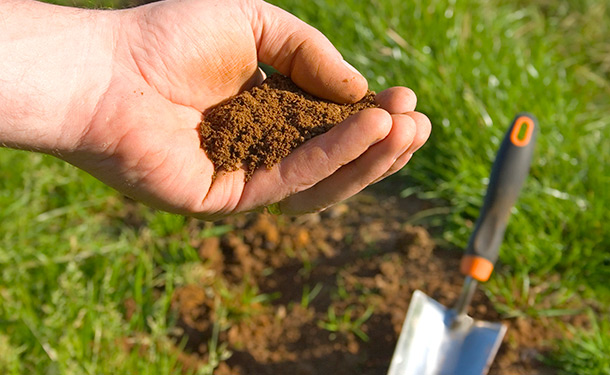
Soil is the lifeline for all plants. Jam-packed with nutrients, it plays a critical role in a plant’s healthy development. Each plant is suited for a particular soil type. Soil types vary depending on the location and climate zone in which you live. Gardening is an art. The soil is the gardener’s canvas on which a beautiful floral masterpiece can be created. Oftentimes, it is necessary to consult an expert to determine how to transform your soil into what it should be for your plants. Getting the right soil sample is, therefore, crucial.
6 Steps in Soil Sampling
The right soil sample provides you with a perfect basis for testing the soil’s pH and nutrient levels. You can purchase a soil test kit at any local gardening store. However, you could also take your soil sample to a local agricultural and environmental lab. The process of acquiring a soil sample is quite simple.
Step One: Ensure that You Have the Right Tools
There are some key tools that you will need for the soil sampling process. These tools include:
- A soil sample bag
- A shovel
- A plastic bucket or container
- A garden trowel
- String
- Popsicle sticks
Step Two: Identify the Right Sampling Location
Divide your gardening space based on vegetation and soil characteristics. Each soil sample should represent a particular plant type or condition. Collect between 8 to 10 soil samples for each division and label them accordingly. Pay close attention to the drip line of trees and shrubs. The drip line refers to the area around the trees perimeter where it sheds water. If you are taking a soil sample from around a tree, ensure that the sample is taken at most 8 inches away from the drip line. Use the popsicle sticks and string to mark the sampling locations you’ve chosen.
Step Three: Pay Attention to the Sampling Depth
After you have removed plants, mulch and fallen leaves from the sampling area, you need to determine how deep to dig the hole. The depth to which you dig the soil is important. Lawns have a sampling depth of 4 inches. All other gardening areas have a sampling depth of 6 inches. Place the shovelled dirt aside.
Step Four: Take Out a Bit from the Side
After you have dug a hole to the appropriate depth, use your trowel to scrape a half-inch vertical mound of dirt from the side of the hole.
Step Five: Ensure the Soil is Clean
Look at the dirt in the soil sample hole carefully. Remove roots, rocks, worms, and all other material that isn’t soil. Mix what is remaining.
Step Six: Place the Soil Sample in the Sample Bag
Fill the soil sample bag with an adequate amount of the soil sample. Air dry the soil sample overnight. You can then either send the soil sample to a professional lab or use a home soil testing kit to analyse the soil.
Understanding the Soil Test Results
Getting a soil sample and sending it to a lab is one thing. Understanding how to use the results of the analysis is another. Here are a few key areas to consider based on the test results of your soil sample.
Soil pH
Optimal nutrient levels for soil are reached within a pH range of 6.2 to 6.8. Some plants prefer slightly acidic soils within a pH range of 6.1 to 6.9. These plants include: tuff grass, flowers, ornamental shrubs, fruits, and vegetables. Some plants require a more acidic environment for optimum growth. These plants require soil to have a pH range between 4.9 and 5.5. Examples of these types of plants include: rhododendron, azalea, pieris, mountain laurel, some wildflowers, some conifers, and blueberries. It is, therefore, important for you to be aware of the optimal pH level required for the plants you wish to grow.
If your soil isn’t at the required pH, there are a few tricks you can use to get it to where it needs to be. Adding lime (CaCO3) raises soil pH. Adding elemental sulphur (S) or iron sulphate (Fe2SO3) lowers soil pH. Adding these elements, however, only provides a short term solution. The soil will revert to its natural pH over time. The lime test index measures the soil’s overall acidity. A low lime test index indicates that the soil will be highly resistant to a change in pH. Therefore, you would have to use much more lime to alter the soil’s pH. A lime index range of 6.8 to 7.0 is desirable.
Cation Exchange Capacity (CEC)
Nutrient retention is crucial for healthy soil. CEC measures a soil’s ability to retain nutrients that have positive charges (cations). Some of these nutrients include hydrogen, calcium, magnesium, and potassium. Soils with high CEC readings are packed with these nutrients, but require a greater proportion of fertilizer than other soil types. Soils with low CEC readings require frequent applications of small amounts of fertilizer. Clay soils have the highest CEC readings, while sandy soils have the lowest.
Base Saturation
Base saturation refers to the percentage distribution of the cations in the soil. Cations are absorbed more readily by plant roots when base saturation is high. Calcium and magnesium are the most prominent cations in slightly acidic or neutral soils.
These are the three readings that you need to pay close attention to from your soil sample analysis. Understanding each of the readings will let you know if it is possible to plant the plants you desire. They also help you determine the adjustments that you can make to your soil to create favourable conditions for your plants. Indulge your green thumb by taking a soil sample today.
References:
www.spectrumanalytic.com/support/library/ff/Interpreting_Lawn_and_Garden_Soil_Results.htm
extension.uga.edu/publications/detail.cfm?number=C896#Steps